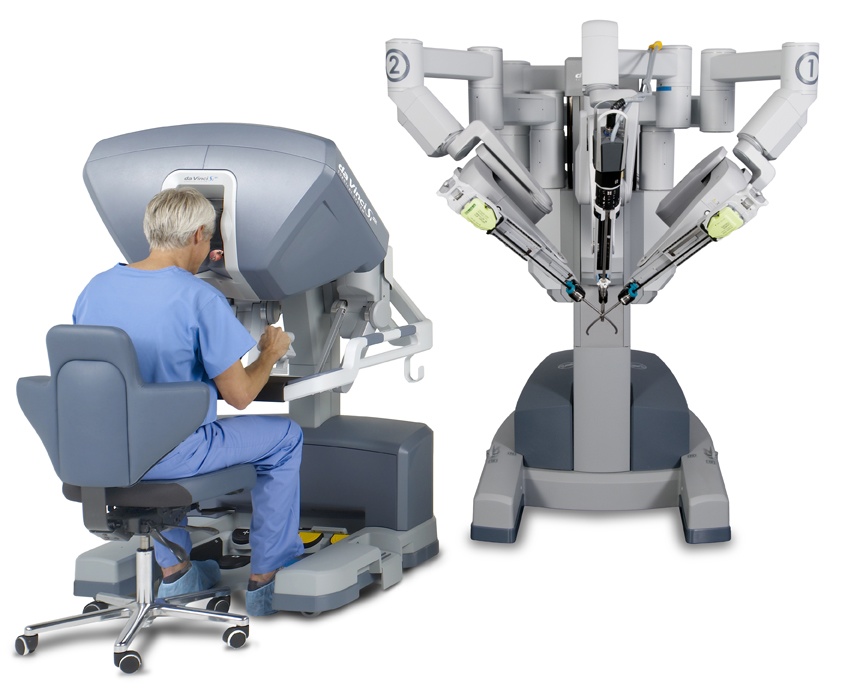An Overview of Robotic Prostatectomy Risks
“Prostate cancer treatment has made great strides in the last decade with the introduction of the robotic prostatectomy. Impotence and incontinence risks may be reduced by prostatectomies that are performed by robotic surgery,” says Dallas urologist Dr. Mark Allen.
There are numerous prostate cancer treatment options available today to patients in the Plano, Frisco and Dallas, Texas area. If surgical removal of the prostate gland is one of these, one recommendation is a robotic prostatectomy. Impotence and urinary incontinence are common concerns most men face when considering a radical prostatectomy. The robotic technology, however, has made great strides in recent years to reduce these risks.
If you are considering this approach to treat your cancer, it is important to understand all of the facts. Dr. Mark Allen, a Dallas urologist, answers some of the most common questions regarding this procedure. He also discusses robotic prostatectomy impotence risks, as well as urinary incontinence concerns.
What is Robotic-Assisted Surgery for Prostate Cancer Treatment?
This is a minimally invasive procedure that has been available for a few years now in Dallas. Urologists use this approach to remove all or part of the cancerous prostate gland through a robotic-assisted technology. It accomplishes the necessary internal repairs while leaving the body and organ surfaces as natural as possible. During surgery, the surgeon sits a few feet away from the patient at a console. Here, he controls the computerized movements of the robotic arms. A small camera and specialized instruments are mounted on the robotic arms. These are inserted through keyhole incisions into the patient’s abdomen. Once the surgeon obtains a visual of the inside of the abdomen, he works to remove the cancerous gland.
How Safe is Robotic Prostatectomy?
Robotic surgery dramatically enhances visualization, precision, control and dexterity. It also has been shown to overcome the limitations of traditional laparoscopic technology that Dallas urologists historically use. The da Vinci Robotic Surgical System is FDA approved and is vigorously tested to ensure safety and quality control.
Benefits of Robotic-Assisted Surgery
As the surgeon moves his hands, wrists and fingers, the technology translates the motions into precise micro-movements that allow greater precision. This is especially important as these precise movements help to spare nearby nerves that control urinary continence and sexual function. Evidence-based benefits for this procedure include less scarring and bleeding, less pain, faster recoveries, and a quicker return to activities. Through a robotic prostatectomy, impotence and urinary incontinence risks are also decreased.
Robotic Prostatectomy Side Effects
During prostate cancer treatment, whether it is a laparoscopic prostatectomy, or a robotic prostatectomy, impotence and incontinence are concerns. However, the severity of these side effects will vary.
Impotence is the inability to achieve or sustain an erection that is suitable for sexual intercourse. During a robotic prostatectomy, impotence is a risk because the nerve bundles responsible for achieving an erection may be removed. A nerve-sparing procedure, therefore, may also be performed. This is a technique that Dallas urologist, Dr. Mark Allen performs at the same time as the prostate removal. He performs this by carefully preserving the neurovascular nerve bundles that surround the prostate. This is done in hopes of the patient being able to maintain sexual function. This procedure is successful in a large percentage of prostate cancer treatment cases. Patients not able to regain sexual function after two years of surgery may be candidates for erectile dysfunction treatment. There are new procedures available that have proven to be very successful for patients seeking erectile function restoration.
Urinary incontinence is the inability to hold or control one’s urine. Control of urinary function is made possible by two muscles, one of these muscles resides in the prostate. If the prostate is removed during surgery, the urethra is surgically reconnected to the bladder and will lead to a certain degree of incontinence during the recovery period. Once the remaining muscle regains strength, urinary control is can often restored. However, in some patients, urinary incontinence will be an ongoing problem. There are incontinence treatment procedures available that have proven to be effective options following a prostatectomy for prostate cancer treatment.
Robotic Prostatectomy Outcomes
Recent studies comparing the robotic approach to the laparoscopic approach indicate similar success rates in controlling the cancer. Both techniques are effective prostate cancer treatment options. Studies, however, suggest that robot-assisted prostate removal may allow for earlier return of continence and sexual function. Recovery periods are also noted to be easier and quicker for the patient.
To learn more, visit: Dallas Urologist, Dr. Mark Allen, Prostate Cancer Treatment
For additional resources on robotic prostatectomy as a prostate cancer treatment, please contact the office of Dr. Mark Allen, urologist serving the communities of Plano, Frisco and Dallas, Texas.



